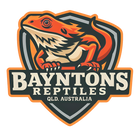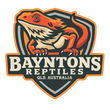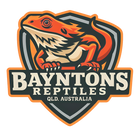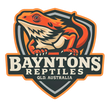Silkback (Silkie)
🔎 Quick Summary (Customer-Friendly)
Silkback bearded dragons (often called “Silkies”) are one of the most extreme morphs in the reptile world. They have no scales at all, giving them smooth, shiny skin that shows off colour like wet paint. They’re visually stunning, but they need extra care and are not recommended for beginners. Silkbacks are mainly used by advanced breeders who want to push colour intensity to the absolute maximum.
📸 Visual Traits & Identifiers
- Completely scaleless — glossy, rubbery skin
- Ultra-bright colour saturation (reds, citrus, paradox, and purples look painted on)
- Smooth, shiny appearance — looks more like an amphibian than a reptile
- Pronounced eyes and sleek body shape
- Fragile skin — prone to injury and drying out
- Unique, “melted” aesthetic compared to normal dragons
🧬 Genetic Behaviour & Inheritance
- Genetic Type: Homozygous Co-Dominant (Double Leatherback Gene)
- Inherits two Leatherback genes → Silkback
Pairing Outcomes
- Normal × Leatherback = 50% Leatherback, 50% Normal
- Leatherback × Leatherback = 25% Silkback, 50% Leatherback, 25% Normal
- Leatherback × Silkback = 50% Leatherback, 50% Silkback
- ⚠️ Never breed Silkback × Silkback → high mortality and deformities
🧪 Why Breeders Use It
Silkbacks allow maximum colour expression. With no scales to block pigment, every colour comes through brighter and cleaner than any other morph. Advanced breeders use Silkbacks in programs to boost the vibrancy of reds, oranges, yellows, paradox, and more. They’re considered “living canvases,” but because they’re fragile, they’re best used in breeder projects — not as pets for first-time keepers.
🔁 Popular Morph Pairings
- Silkback × Hypo → Bright silkies with clear nails and neon tones
- Silkback × Citrus → Lemon-yellow or neon-orange painted morphs
- Silkback × Trans → Glossy silkies with dark eyes and rich colour
- Silkback × Paradox hets → Boosts chaotic colour expression
- Silkback × Red → Deep blood-red silkies for display projects
- Silkback × Leatherback → Safest and most common pairing (produces 50% Leatherback, 50% Silkback)
⚠️ Important Notes
- Special care required: avoid rough surfaces, provide higher humidity, and give regular baths
- Do not house with spiky or aggressive cage mates
- Do not breed Silkback × Silkback — survival and health issues
- They shed differently: slough skin in patches and may need assistance
- Better for breeders than casual pet keepers
💡 Fun Fact
Silkbacks earned the nickname “Painted Dragons” because their scaleless skin displays colours as if brushed on with paint — reds, lavenders, citrus, and paradox blotches look surreal and unmatched by any other morph.
✅ Best Uses in Breeding Programs
- To maximise colour saturation in any bloodline
- To create high-end Leatherbacks with ultra-bright tones
- As part of Paradox pairing strategies
- To produce display-quality dragons for elite collections
🔚 Final Word
Silkbacks are one of the boldest morphs ever created. They’re fragile, rare, and require special care — but when used wisely, they unlock colours and visuals no other morph can touch. For breeders chasing intensity and rarity, Silkbacks are a powerful tool in the genetics toolbox.
🛡️ Proudly Bred & Shared by:
🔥 BAYNTONS REPTILES 🔥
Australia’s Premium Bearded Dragon Genetics
Built By Bloodlines.
📍 Based in QLD | 🦎 Est. by Brothers | 🔗 [@BayntonsReptiles]



